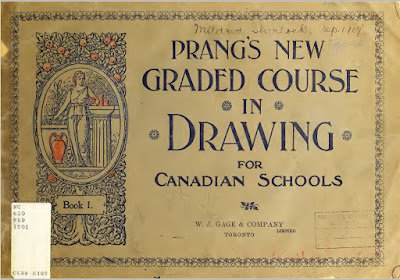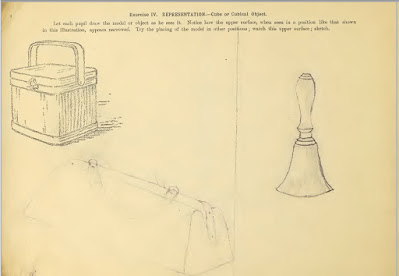Wednesday, September 30, 2020
Using motion blur in an oil painting
Tuesday, September 29, 2020
Book Review: 'Enchanted: A History of Fantasy Illustration'

Monday, September 28, 2020
Robert Bechtle (1932-2020)
Robert Bechtle (1932-2020), one of the champions of Photrealism, once said: "One reason my paintings have become realistic has to do with my interest in what things really look like."
Tissot's Creative Use of Photogaphy
A new book on James Tissot discusses his painting techniques and explains how he used photo reference.
According to author Sarah Kleiner, "he had a dedicated photography studio at the Château de Buillon, and evidence reveals that he used the medium to capture poses or other compositional elements.
In Waiting for the Ferry, 1878, (above), for example, he arranged the tones so that the woman in the light coat stands out against the background, while the man and the boy are dark on dark and daringly cropped off the right side, a compositional trick he shared with his good friend Edgar Degas.
The reference photo shows Kathleen Newton and her son. The girl's hands are on a sawhorse and they all appear to be holding still for a long exposure.
In a second exposure, she is sitting up more and he is leaning forward. Tissot picked and chose from these variations to get the poses he wanted.
More in the magnificent new hardcover monograph about James Tissot (1836-1902).
Sunday, September 27, 2020
Saturday, September 26, 2020
Should I Choose an Art Career?
First off, do you really love making art? Because you'll need to love it so much that you enjoy doing it day in and day out. You'll have to do high quality work even when you're bored or don't want to show up.
Friday, September 25, 2020
Using Casein Over a Pretextured Canvas Board
You can see more casein paintings on the Casein playlist on my YouTube channel or the "casein" search term on this blog.
Jack Richeson 37-Ml Artist Casein Colors, Set of 12Thursday, September 24, 2020
Shopping for Veggies

So I worked from photos while I painted my wife Jeanette. This one is in casein, and I captured the process in this YouTube video.
More resources
Gurney tutorials on Gumroad
Wednesday, September 23, 2020
Heavy Traffic
Darn these crowded side streets! From Dinotopia, First Flight: 20th Anniversary Edition (Calla Editions)
Tuesday, September 22, 2020
Favorite Books
I wasn't a big fiction reader as a kid (I mostly looked at pictures and captions), but there were three books that totally lifted me out of my world: "Tom Sawyer" by Mark Twain, "Treasure Island" by Robert Louis Stevenson, and "Paddle to the Sea" by Holling Clancy Holling. What books gave wings to your imagination when you were young?
Monday, September 21, 2020
Tour de Hudson Valley
Sunday, September 20, 2020
Copies of Heads by Classic Illustrators

1. Haddon Sundblom / Robert Bonfils. Quaker Oats man. Low frontal plus edge lighting. Bristle filberts only. Stroke direction and weaving. Similar to Zorn, Sargent, Sorolla.

2. Dean Cornwell. Bristle flats, stand oil, decorative geometry. Darks first transparently. Opaque lights last. More like Brangwyn.
Saturday, September 19, 2020
Plein-Air FAQ
Here's a short list of answers to frequently asked questions, designed to stick on my easel or a nearby fencepost. You can generate your own QR codes for free at a site like this.
Friday, September 18, 2020
How Do You Respond to These Images, and What Does That Say About You?
Psychologists have developed several projective tests to understand the minds of their patients. The famous Rorschach test is one of them. A lesser known test is the thematic apperception test.
Subjects are shown a series of illustrations of ambiguous but emotionally powerful situations and asked to supply the story behind them.
Critics of projective tests, such as Rudolf Arnheim (1904-2007), have argued that the scientific value of such tests is limited. We may be overestimating what an individual's interpretation of such images says about the individual. The images have an objective reality of their own that people are responding to, and we deconstruct and explain images in so many ways, depending on what we expect people to want to hear.
------
Thursday, September 17, 2020
How They Taught Drawing to Children in 1901

A specific exercise written at the top of each page, with a small printed drawing as an example.

Wednesday, September 16, 2020
Hubert von Herkomer's On Strike
"Herkomer’s painting On Strike introduces a different element to the plight of workers. It is less concerned with illuminating bad conditions than in the direct action that could change them. In the Victorian era, when the work ethic was idealised as a means of stability and prosperity for the family, the withdrawal of labour was shocking to many."
Tuesday, September 15, 2020
Emily Dickinson's Home Poem #440

And now, before the door
I dared not open, lest a face
I never saw before
Stare vacant into mine
And ask my business there.
My business, - just a life I left,
Was such still dwelling there?
I fumbled at my nerve,
I scanned the windows near;
The silence like an ocean rolled,
And broke against my ear.
I laughed a wooden laugh
That I could fear a door,
Who danger and the dead had faced,
But never quaked before.
I fitted to the latch
My hand, with trembling care,
Lest back the awful door should spring,
And leave me standing there.
I moved my fingers off
As cautiously as glass,
And held my ears, and like a thief
Fled gasping from the house."
I Years had been from HomeAnd now before the DoorI dared not enter, lest a FaceI never saw beforeStare stolid into mineAnd ask my Business there –“My Business but a Life I leftWas such remaining there?”I leaned upon the Awe –I lingered with Before –The Second like an Ocean rolledAnd broke against my ear –I laughed a crumbling LaughThat I could fear a DoorWho Consternation compassedAnd never winced before.I fitted to the LatchMy Hand, with trembling careLeft back the awful Door should springAnd leave me in the Floor –Then moved my Fingers offAs cautiously as GlassAnd held my ears, and like a ThiefFled gasping from the House –
I fumbled at my nerve,I scanned the windows near;The silence like an ocean rolled,And broke against my ear.
I leaned upon the Awe –
I lingered with Before –
The Second like an Ocean rolled
And broke against my ear –
The first version:
"Who danger and the dead had faced,While the second says:
But never quaked before."
"Who Consternation compassedAnd never winced before."
Monday, September 14, 2020
Triad Challenge: "Sunny Still Life"
We've had such an enthusiastic response to our previous painting challenges that many of you asked for another opportunity.
I hesitate to call it a "contest" because there's no entry fee and the spirit is more about cooperation, community, and camaraderie than competition. We're all at different levels of skill and experience |
Laura Coombs Hills, (American,1859-1952) |
"Sunny Still Life" Challenge
The challenge is to paint a still life in sunlight from observation with a limited palette.
The limited palette must be a triad of your choice—just three colors plus white.
For example, here are some suggestions, giving equal time to different companies:
Holbein gouache: Viridian
 , Cadmium red deep
, Cadmium red deep , and Yellow ochre
, and Yellow ochre plus white
plus white
M. Graham gouache: Ultramarine blue, Cadmium yellow deep

 , and Burnt sienna plus
, and Burnt sienna plus white
white
Winsor and Newton gouache: Perylene maroon
 , Cadmium yellow
, Cadmium yellow , Cobalt blue
, Cobalt blue plus white
plus white
Assorted makers: Prussian blue
 , light red
, light red , golden ochre
, golden ochre , and white
, and white
 |
| Painting by Vladimir Zhdanov (Russian 1902-1964) |
You can paint any objects, such as flowers, fruit, toys, tools, products, or harvest vegetables. They can be things you arrange into a group or objects that you found in place. Regardless of what you paint, I'm looking for a colorful, sunny effect, either from light streaming in a window or direct sunlight outdoors.
On Location
Your picture must be painted mainly from observation and it must be a new painting done for this challenge.
Paints
All traditional painting media are acceptable, such as: oil, watercolor, casein, or gouache, acrylic-gouache, or acrylic. Sorry, no dry media or digital.
Deadline
It's free to enter. Please submit only one painting. You can enter as soon as you finish the piece, but no later than the deadline: Tuesday, October 20, 2020 at midnight New York time. Winners will be announced on October 27.
What and How to Enter
Shoot three image files: 1. Your finished painting, 2. A photo of the painting in progress in front of the subject, and 3. A Triad Test of your chosen gamut. Your face doesn't have to be in the photo unless you want to.
If you do Instagram or Twitter, please use the hashtag #sunnystilllife You can also upload the images to the Facebook Group Color in Practice. If you don't have an Instagram or Facebook account, please ask a friend with an account to help you. Please include in the FB or IG post the list of the three colors you chose (plus white), and if you want, a word about your inspiration or design strategy, or an anecdote about your painting experience.

I'll pick one Grand Prize and five Finalists. All six entries will be published on GurneyJourney, and all six will receive an exclusive "Department of Art" embroidered patch. In addition, the Grand Prize winner receives a Gurney video (DVD or download) of their choice.
-----
Own the 90-minute feature "TRIADS: Painting with Three Colors" for only $17.98
• HD MP4 Download at Gumroad
• or HD MP4 Download at Sellfy




































